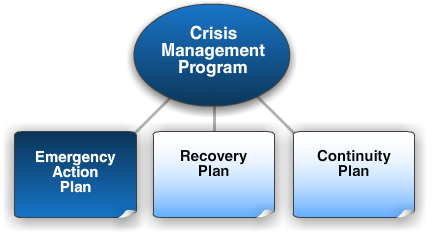Security Concerns
One area of interest in both the security plan and the emergency action plan is that a security incident could result in damage to a facility, possibly even facility failure. In such a case, the law enforcement agencies would have the added responsibility of investigating the incident to identify and apprehend the perpetrators. This could complicate the incident command authorities among local responders and potentially interfere with emergency actions planned by the facility owner.
One possibility of attack is on the cyber systems that are used to operate many dam projects. An aggressor could attempt to disable such systems or even hijack them to intentionally operate the facility improperly, in order to cause damage. Facility safety incidents caused by cyber attack should be considered during development of the emergency action plan.
Remember . . . Because emergency action plans often receive wide distribution, it might be necessary to exclude sensitive information from some copies. Necessary but sensitive information could be included in the emergency action plan as a supplement or as another appendix. Distribution of this portion could be limited to those individuals or agencies with a specific need to know.
Communications Procedures
Reliable communications are essential during emergency situations to quickly exchange critical information among key individuals and organizations. The possibility of unreliable primary communications systems in times of emergency should be addressed during development of the emergency action plan. Previous catastrophes have demonstrated that normal communications systems are unreliable during such events. It might be necessary to provide backup communications systems for use during emergencies. Such systems should be developed and regularly tested prior to an emergency.
Evacuation Planning and Implementation
Evacuation planning and implementation is typically the responsibility of State or local emergency management authorities. Although an EAP does not need to include an evacuation plan, it should indicate who is responsible for evacuation and whose plan will be followed. There may be situations where recreational facilities, campgrounds, residences are located below a dam where the dam owner could provide a more timely warning.
Inundation maps developed by the dam owner must be shared with emergency management authorities and included in the EAP. These maps may help in the development of warning and evacuation plans. It is important for dam owners to coordinate with the appropriate emergency management authorities and provide information from dam inundation studies that can assist with evacuation planning.
Dam owners should also include procedures in the EAP for ensuring that emergency management authorities are provided with timely and accurate information on dam conditions during an incident.
This information will help agencies make the appropriate decisions on evacuations.
Post-Emergency Evaluation
Following an emergency, all participants should participate in a review that identifies:
- Events occurring before, during, and following the emergency;
- Significant actions taken by each participant, and possible improvements for future emergencies, and
- Strengths and deficiencies found in procedures, materials, equipment, staffing levels, and leadership.
Maintaining an Emergency Action Plan
After the EAP has been developed, approved, and distributed, continual reviews and updates must be performed. Without periodic maintenance, the EAP will become outdated and ineffective.
The EAP should be updated promptly to address changes in personnel and contact information, significant changes to the facility, or emergency procedures. The EAP should be reviewed at least annually for adequacy and updated as needed. Even if no revisions are necessary, the review should be documented.
The review should include an evaluation of any changes in flood inundation areas, downstream developments, or in the reservoir and a determination of whether any revisions, including updates to inundation maps, are necessary.
The EAP should be updated promptly with the outcome of any exercises, including periodic reviews and verifications of personnel and contact information from Notification Flowcharts and contact lists. Any changes to the dam and/or inundation zone should be reviewed because the changes may affect the inundation maps. Maps should be changed as soon as practicable and noted in the EAP.
Once the EAP has been revised, the updated version (or only the affected pages in minor updates) should be promptly distributed to those on the distribution list.
Coordinating and Exercising the Plan
Effective exercises are an essential element of the preparedness cycle. FEMA publication 64, Federal Guidelines for Dam Safety: Emergency Action Planning for Dams, emphasizes that facility owners should exercise their emergency action plans. The Federal Energy Regulatory Commission (FERC) recommends an annual face-to-face meeting between the facility owner and primary emergency management agency, and an annual drill, as well as periodic higher level exercises. In the next lesson, you’ll learn more about the different types of exercises.

 Review DHS pandemic preparedness guidelines for owners and operators of critical infrastructure.
Review DHS pandemic preparedness guidelines for owners and operators of critical infrastructure.